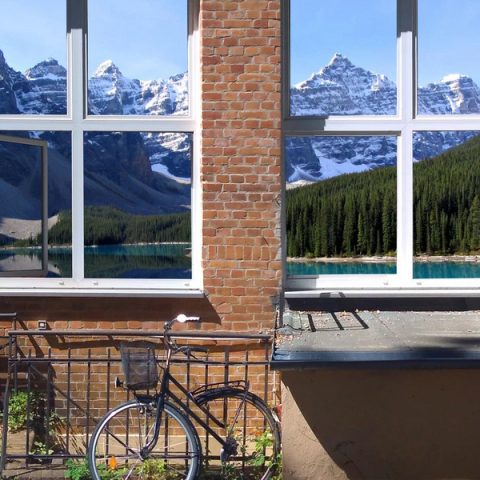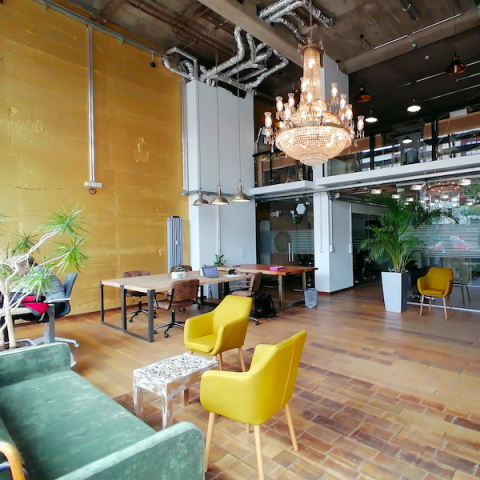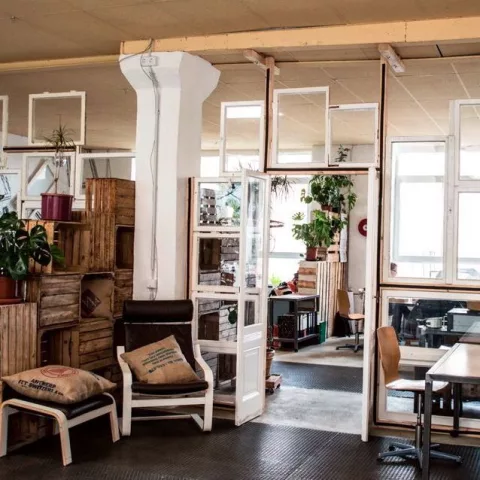Searching, finding and operating a premises where you can set up your coworking space, or any commercial space for that matter, is not without its complexities. Throw in the German language and you’ve got a veritable bondage session of red tape. And the Germans know all about that! Bondage, I mean.
In short, this little article is about the pitfalls associated with renting commercial premises in Berlin. In not-so-short it’s about our experiences as a startup having signed a one-year contract for our current coworking space in Berlin-Schöneberg and what we can now pass on to you, the possibly unsuspecting immigrant.
I should first give you a description of our coworking space, www.tuesdaycoworking.com, and the bang we get for our buck. After extensive searching, we settled on a 118 m² (1270 ft²) ground-floor, street-facing office space in a well-enough-to-do part of town. It’s bright, quiet and has high and pretty stylish stucco ceilings. We saw the ad, viewed the space, considered the €10/m² price tag and thought: Let’s do it!
1. The Extra Costs: Having a combined Living-in-Berlin Age of 22 between the two of us, we knew the €10/m² wouldn’t end there. And indeed it didn’t. Let’s simplify: If you’re looking for a 100m² (1070 ft²) space and it’s listed as €10 per square meter, that doesn’t mean you pay your €1000 per month and stroll off into sunset. No. Listings are usually net or “netto” in German, which means you have to figure in additional expenses (German: Nebenkosten (NK)). This cover things like garbage collection, water, rodent removal (in German, the wonderfully scary: SCHÄDLINGSBEKÄMPFUNG!!!) and other things.
Most landlords will tack on another €3/m² for these expenses. Also: we’re talking about a commercial premises here, which means you have 19% VAT (Sales Tax) to pay on top of all of that. Sure, you can offset it, but (NB!) you have to have it in your account to pay it first. So what was €1000/month has suddenly become €1547. Oh my. Add heating, electricity, Internet, insurance and coffee to that and you’ve got your basic running costs. Before all of that of course is the deposit, which can be anywhere between one and six months rent. If you’re a new business, you might be looking at six. It all depends on how desperate the landlord is to rent out their space. And the fun doesn’t stop there. The brokers who listed your space? Well hell, why they might just want a commission for their trouble… This is the part where you look back longingly at the €1547, at better times when it was just €1547… oh onefivefourseven…
Staying on point! Sometimes heating is included in your Nebenkosten, sometimes it isn’t. In our coworking space, it isn’t. Which means we had to find and register with a gas supplier. Fortunately, sites like www.verivox.de or www.check24.de do a pretty good job in listing comparisons. If you’re lucky *ahem* enough to be in a space with gas heating, then you’ll also have the esteemed pleasure of having to get it checked annually. And you guessed it, you have to pay for that too (between €70–100/year). But do have a look at your rental contract to make sure. Better safe than sorry. Speaking of safe…
2. Security! This year (2016), break-ins in Berlin were up a whopping 9%. Nine! Nine percent! If you have a ground-floor space in particular, make sure that you have adequate locking on your doors and windows. It’s possible to rent security systems and have sensors installed (starting from about €45/month), which might be an affordable option if you don’t know how long you’ll be staying at a particular location and don’t want to make a big investment. However, installing an additional bar lock might be deterrent enough to any would-be burglar. Speaking of unwelcome guests…
3. Weirdos! Most coworkers are lovely people…
Most coworkers really are lovely people. Occasionally, you might have the loud-typist, the heavy-breather, the hummer, the foot-tapper, which, in a small space, can get old quickly. But they’re still usually lovely people. However, if you’re renting a ground-floor, street-facing space in a big city like Berlin, then you might as well be holding up some kind of irresistible magical twinkling bottle-cap encouraging the weirdo walk-in. Weirdo walk-ins can go two ways: They might come in, distract, be downright hilarious and leave once they’ve said their bit OR they might come in, dominate, be unbearably loud, obnoxious, possibly unsettling and linger longer than anyone would care for. In this case, one trick to get them moving along their wacky way again is to ask them for their email address, phone number or business card and say something vague about how you might be in touch once you know more or when something becomes available, etc. Your relationship with the truth here can be quite the liberal one, but it is justified. Your priorities are to your community, to your customers and their well-being. Whatever happens, try to keep your cool, be professional and polite. That’s fairly obvious. It’s difficult enough dealing with weirdos as it is. You don’t want an upset weirdo to boot.
So there we are. With, as they say, preparation being half the battle, take these three things into consideration before making your next move and you might save yourself some wallet-ache, bureaucracy and oddball-induced stress. Good luck!





